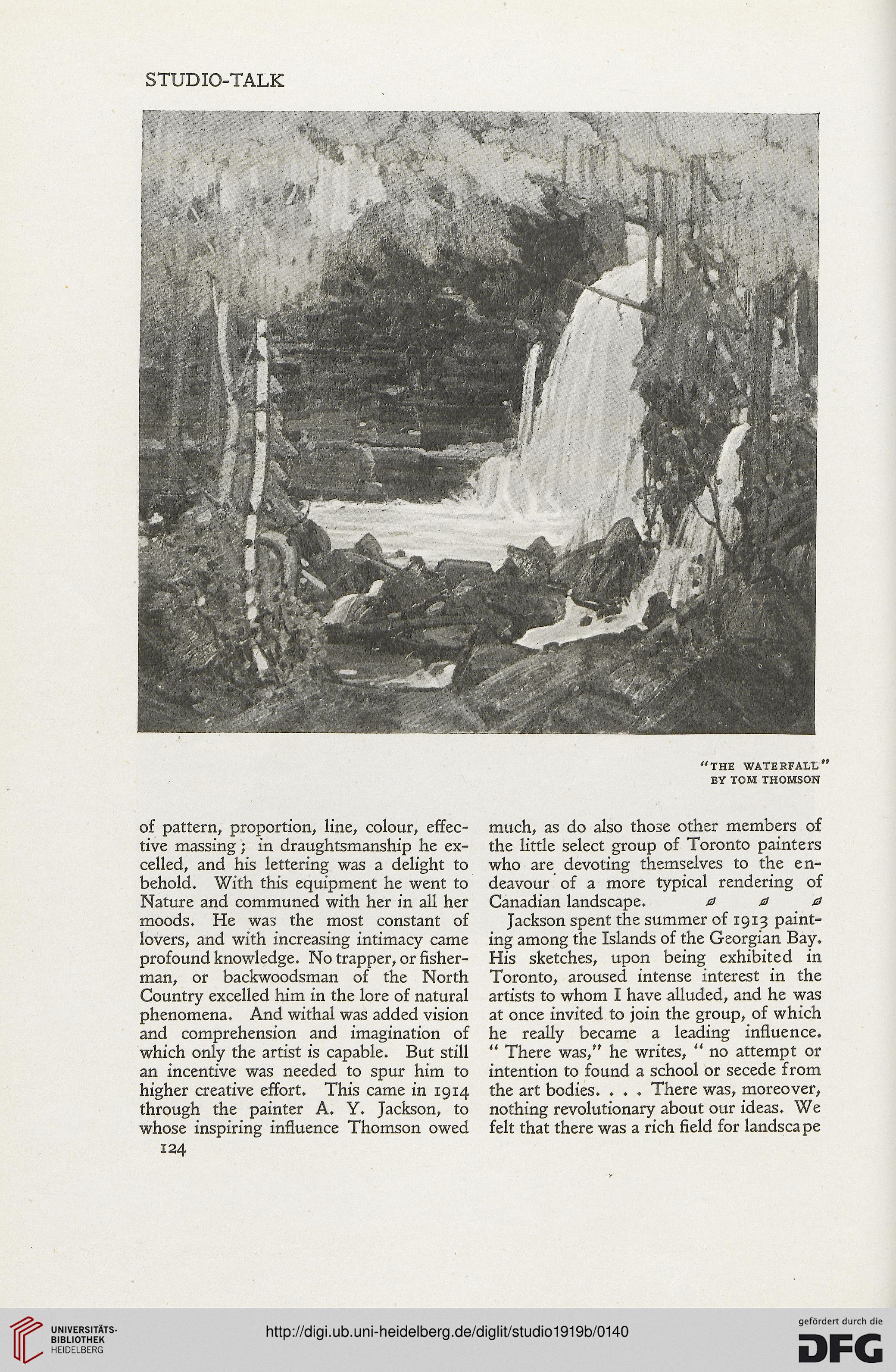STUDIO-TALK
"THE WATERFALL"
BY TOM THOMSON
much, as do also those other members of
the little select group of Toronto painters
who are devoting themselves to the en-
deavour of a more typical rendering of
Canadian landscape. o a a
Jackson spent the summer of 1913 paint-
ing among the Islands of the Georgian Bay.
His sketches, upon being exhibited in
Toronto, aroused intense interest in the
artists to whom I have alluded, and he was
at once invited to join the group, of which
he really became a leading influence.
“ There was,” he writes, “ no attempt or
intention to found a school or secede from
the art bodies. . . . There was, moreover,
nothing revolutionary about our ideas. We
felt that there was a rich field for landscape
of pattern, proportion, line, colour, effec-
tive massing ; in draughtsmanship he ex-
celled, and his lettering was a delight to
behold. With this equipment he went to
Nature and communed with her in all her
moods. He was the most constant of
lovers, and with increasing intimacy came
profound knowledge. No trapper, or fisher-
man, or backwoodsman of the North
Country excelled him in the lore of natural
phenomena. And withal was added vision
and comprehension and imagination of
which only the artist is capable. But still
an incentive was needed to spur him to
higher creative effort. This came in 1914
through the painter A. Y. Jackson, to
whose inspiring influence Thomson owed
124
"THE WATERFALL"
BY TOM THOMSON
much, as do also those other members of
the little select group of Toronto painters
who are devoting themselves to the en-
deavour of a more typical rendering of
Canadian landscape. o a a
Jackson spent the summer of 1913 paint-
ing among the Islands of the Georgian Bay.
His sketches, upon being exhibited in
Toronto, aroused intense interest in the
artists to whom I have alluded, and he was
at once invited to join the group, of which
he really became a leading influence.
“ There was,” he writes, “ no attempt or
intention to found a school or secede from
the art bodies. . . . There was, moreover,
nothing revolutionary about our ideas. We
felt that there was a rich field for landscape
of pattern, proportion, line, colour, effec-
tive massing ; in draughtsmanship he ex-
celled, and his lettering was a delight to
behold. With this equipment he went to
Nature and communed with her in all her
moods. He was the most constant of
lovers, and with increasing intimacy came
profound knowledge. No trapper, or fisher-
man, or backwoodsman of the North
Country excelled him in the lore of natural
phenomena. And withal was added vision
and comprehension and imagination of
which only the artist is capable. But still
an incentive was needed to spur him to
higher creative effort. This came in 1914
through the painter A. Y. Jackson, to
whose inspiring influence Thomson owed
124




